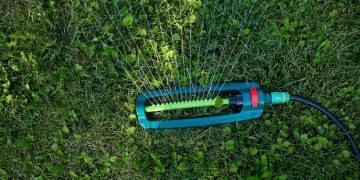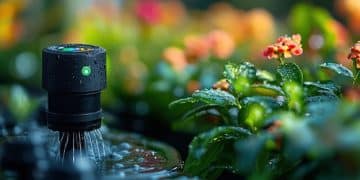Smart Irrigation Systems: Save Water & Energy in Your Landscape
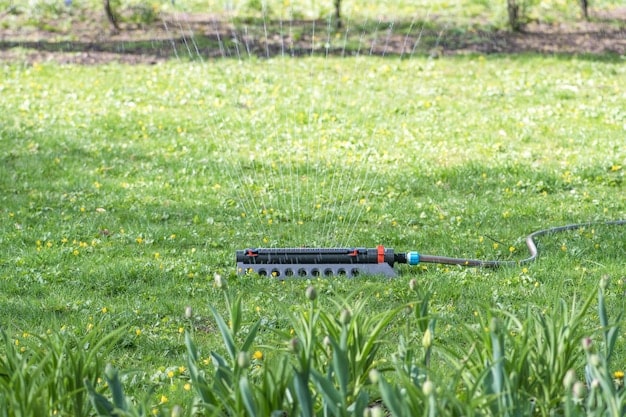
Smart irrigation systems offer a sustainable approach to landscaping by using technologies like soil moisture sensors and weather data to optimize water usage, conserve energy, and maintain healthy landscapes.
Discover how smart irrigation systems can revolutionize your landscaping by significantly reducing water and energy consumption, leading to cost savings and environmental benefits. These advanced systems utilize cutting-edge technology to ensure your plants receive the optimal amount of water, precisely when they need it.
Understanding Smart Irrigation Systems
Smart irrigation systems are a game-changer for anyone looking to optimize their water usage and reduce energy consumption in landscaping. These systems go beyond traditional timers, incorporating technology to adjust watering schedules based on real-time conditions.
Key Components of a Smart Irrigation System
A smart irrigation system consists of several integrated components that work together to monitor conditions and adjust watering accordingly. Understanding these components is key to appreciating the system’s overall functionality.
- Soil Moisture Sensors: These sensors measure the moisture level in the soil, providing data to the controller for informed watering decisions.
- Weather Data Integration: Smart systems use real-time weather forecasts to anticipate rain and adjust watering schedules automatically.
- Smart Controllers: The brain of the system, these controllers analyze data from sensors and weather sources to optimize watering schedules.
By integrating these essential components, smart irrigation systems ensure that your landscape receives only the water it needs, preventing overwatering and conserving valuable resources.
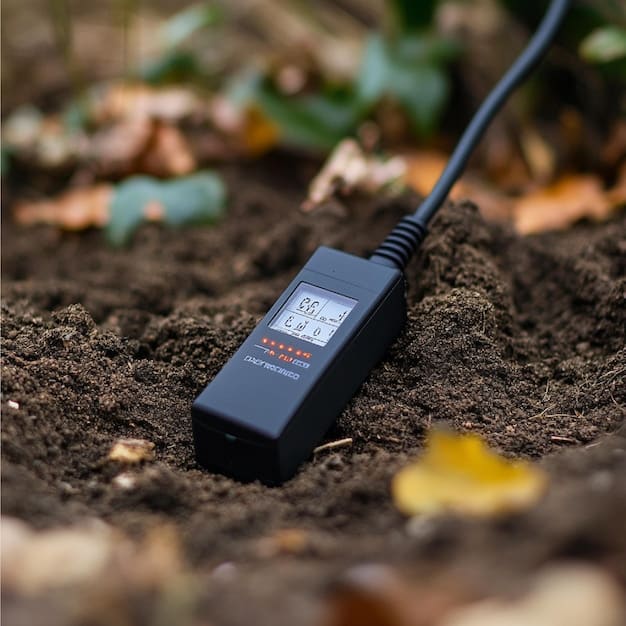
Benefits of Switching to Smart Irrigation
The advantages of transitioning to smart irrigation extend beyond simple water conservation. These systems offer a range of benefits that can improve the health of your landscape and save you money.
Water Conservation
One of the primary benefits is significant water savings. By precisely monitoring soil moisture and adjusting watering schedules, these systems prevent the waste of water associated with traditional irrigation methods.
Energy Efficiency
Smart irrigation also contributes to energy conservation. Since less water is pumped and distributed, the energy required to run the irrigation system is reduced, leading to lower electricity bills.
Improved Plant Health
Proper watering is crucial for plant health. Smart irrigation ensures that plants receive the right amount of water, preventing both overwatering and underwatering, which can lead to healthier, more vibrant landscapes.
Cost Savings
The combined benefits of water and energy conservation translate to significant cost savings over time. While the initial investment may be higher, the long-term savings make smart irrigation a worthwhile investment.
Switching to a smart irrigation system not only benefits your wallet but also contributes to environmental sustainability by conserving valuable resources and reducing your carbon footprint.
Types of Smart Irrigation Systems
There are various types of smart irrigation systems available, each designed to meet different needs and preferences. Understanding the options can help you choose the best system for your landscape.
Weather-Based Systems
These systems use local weather data to adjust watering schedules. They monitor rainfall, temperature, and humidity to determine how much water your plants need.
Soil Moisture Sensor-Based Systems
These systems rely on sensors placed in the soil to measure moisture levels. The sensors send data to the controller, which then decides when and how much to water.
Hybrid Systems
Combining both weather data and soil moisture sensors, hybrid systems offer the most accurate and efficient irrigation. They take into account both environmental conditions and the actual needs of the plants.
- Drip Irrigation: Delivers water directly to the plant roots, minimizing evaporation and runoff.
- Sprinkler Systems: Distribute water over a larger area, suitable for lawns and ground cover.
- Micro-Sprayers: Ideal for flower beds and vegetable gardens, providing targeted watering.
By understanding the different types of smart irrigation systems, you can make an informed decision that suits your specific landscaping needs and goals.
Installation and Maintenance Tips
Proper installation and maintenance are essential for ensuring the optimal performance of your smart irrigation system. Following these tips can help you maximize its benefits and extend its lifespan.
Installation
Installing a smart irrigation system may require professional assistance, especially for complex setups. However, many systems are designed for DIY installation, with clear instructions and user-friendly interfaces.
Maintenance
Regular maintenance is crucial for keeping your system running smoothly. This includes checking sensors, cleaning nozzles, and inspecting for leaks or damage.
Troubleshooting Common Issues
Even with proper maintenance, you may encounter occasional issues. Knowing how to troubleshoot common problems can save you time and money.
Regularly inspect and clean the components to ensure accurate readings and efficient operation. Monitor the performance and make adjustments as needed to adapt to changing weather conditions and plant growth.
Cost Analysis: Smart vs. Traditional Irrigation
When considering a switch to smart irrigation, it’s important to evaluate the costs involved. While the initial investment may be higher, the long-term savings can make it a cost-effective choice.
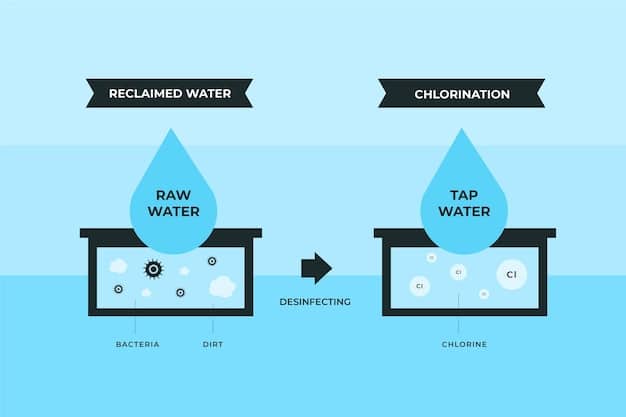
Initial Investment
The upfront cost of a smart irrigation system can vary depending on the size of your landscape and the complexity of the system. Factors to consider include the cost of the controller, sensors, and installation.
Long-Term Savings
The long-term savings come from reduced water and energy consumption. Smart irrigation systems use water more efficiently, lowering your water bills, and require less energy to operate, reducing your electricity costs.
Return on Investment
Calculating the return on investment (ROI) can help you determine how long it will take for the savings to offset the initial cost. Factors such as local water rates and energy prices will affect the ROI.
- Monitor Water Usage: Track your water consumption before and after installing the smart system to quantify the savings.
- Compare Energy Bills: Review your energy bills to see the reduction in electricity usage.
- Factor in Rebates: Check for local rebates or incentives for installing water-efficient technologies.
By carefully analyzing the costs and benefits, you can make an informed decision about whether smart irrigation is the right choice for your landscape.
Making the Switch: A Step-by-Step Guide
Transitioning to a smart irrigation system doesn’t have to be overwhelming. By following a step-by-step guide, you can ensure a smooth and successful switch.
Assess Your Needs
Start by assessing your landscaping needs. Consider the size of your yard, the types of plants you have, and your local climate conditions.
Choose the Right System
Select a system that meets your specific needs and budget. Research different types of systems and compare their features and capabilities.
Installation
Install the system according to the manufacturer’s instructions. You may need to hire a professional for complex installations.
Programming and Monitoring
Program the system to water your plants effectively. Monitor its performance and make adjustments as needed to optimize water usage.
By following these steps, you can make a seamless transition to smart irrigation and enjoy the benefits of water and energy conservation.
| Key Point | Brief Description |
|---|---|
| 💧 Water Conservation | Significantly reduces water usage through optimized watering schedules. |
| ⚡ Energy Efficiency | Lowers energy consumption by reducing the amount of water pumped. |
| 🌱 Improved Plant Health | Ensures plants receive the precise amount of water needed, promoting healthier growth. |
| 💰 Cost Savings | Reduces water and energy bills, providing long-term financial benefits. |
FAQ
A smart irrigation system uses sensors and weather data to automatically adjust watering schedules based on real-time conditions, optimizing water usage and conserving energy.
Soil moisture sensors measure the amount of water in the soil and send this data to the smart controller, which uses it to determine when and how much to water the plants.
Yes, by reducing water and energy consumption, smart irrigation systems can lead to significant cost savings on water and electricity bills over time, making them a worthwhile investment.
Some systems are designed for DIY installation with clear instructions, while more complex setups may require professional assistance to ensure proper functionality and optimal performance.
Weather-based systems use local weather data, such as rainfall and temperature, to adjust watering schedules. These systems prevent overwatering by anticipating rain and reducing irrigation accordingly.
Conclusion
Investing in smart irrigation systems is a smart move for homeowners and businesses looking to save water, conserve energy, and maintain healthy landscapes efficiently. By understanding the types, benefits, and installation processes, you can make informed decisions and enjoy the long-term advantages of this eco-friendly technology.

